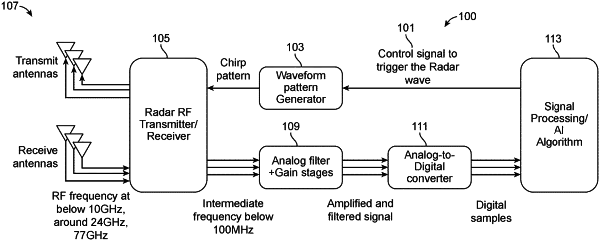| CPC H04R 1/406 (2013.01) [A61B 5/4806 (2013.01); A61B 5/4809 (2013.01); A61B 5/4815 (2013.01); H01Q 1/22 (2013.01); H01Q 21/061 (2013.01); H04R 1/083 (2013.01); H04R 1/326 (2013.01); H04S 2400/11 (2013.01)] | 39 Claims |

|
1. A method for processing signals from a human user in connection with a sleep state, the method comprising:
detecting, using a plurality of sensing devices configured within a vicinity of the human user, a plurality of signals associated with an event associated with a sleep stage of the human user at a predetermined time;
receiving the plurality of signals into an input device, the input device being coupled to an engine device;
processing, using the engine device, by parsing information associated with the plurality of signals; and determining using the engine device, a classification associated with the event;
storing the classification associated with the event at the predetermined time;
continuing the steps of detecting, receiving, processing, and storing for a plurality of other predetermined times from a first time to a second time to create a history of sleep data for the human user, the first time corresponding to a beginning of a first process and the second time corresponding to an ending of a second process;
processing, using an engage engine, the historical sleep data to identify a task to be outputted to the human user, the task being one of a plurality of tasks stored in memory of a computing device;
generating, using a logic therapy block, an output based upon the task; and
initiating a wind down routine for the human user based upon processing the historical sleep data using the engage engine, the historical sleep data including at least information on a heart rate and a breathing rate.
|